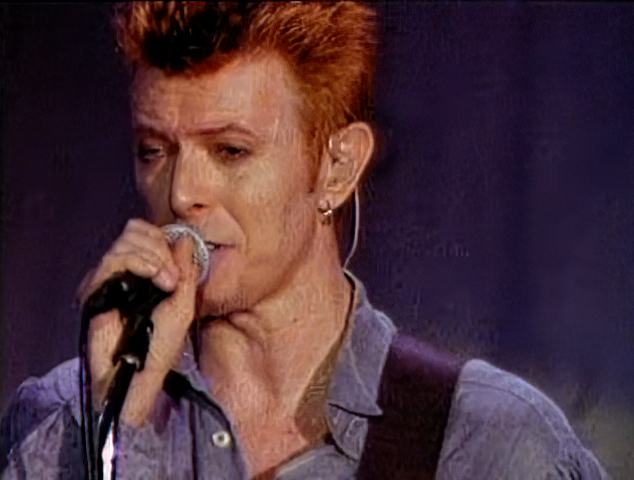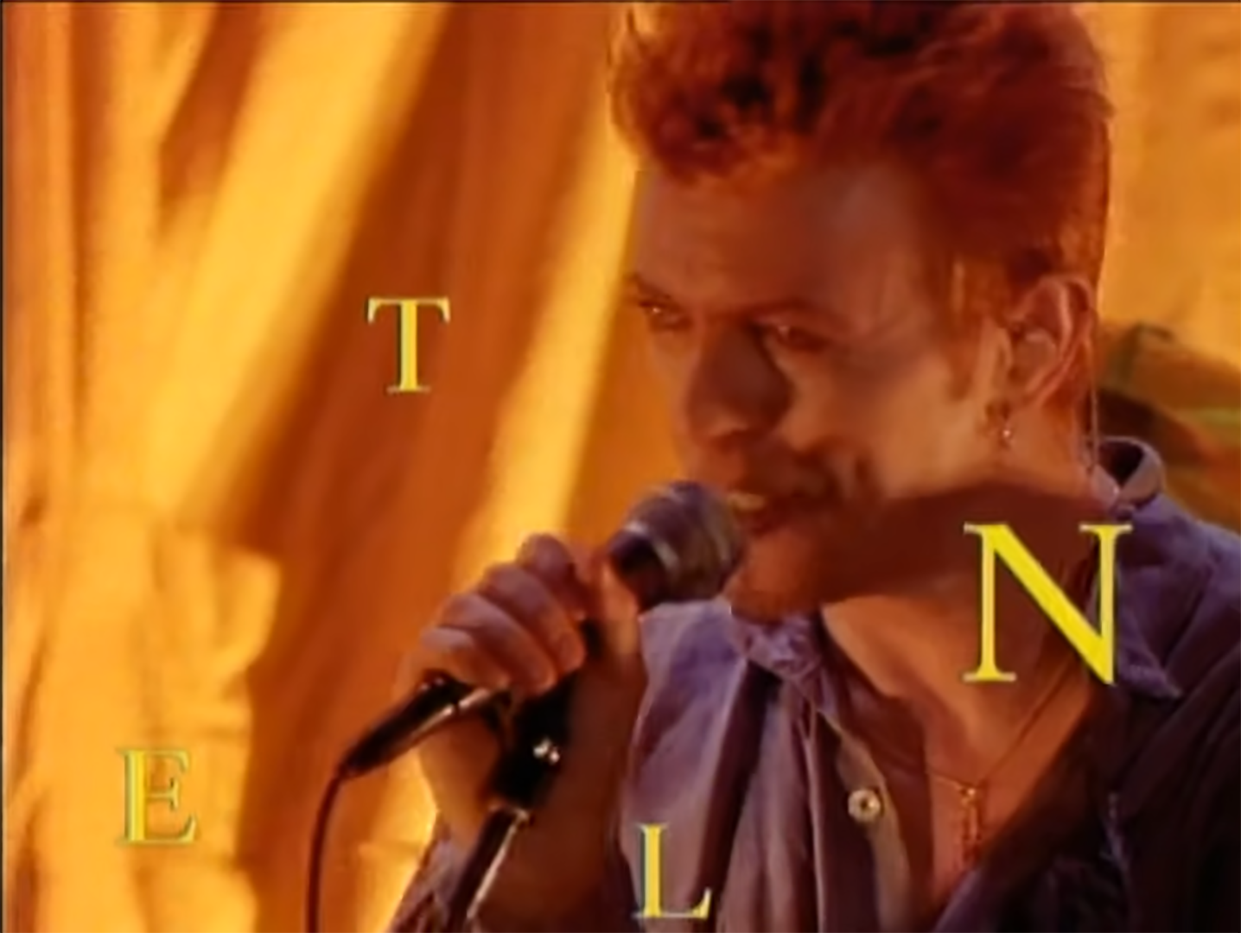By Keith Walsh
2022 is the 25th anniversary of David Bowie’s innovative album of electronica, Earthling. Now getting more of the appreciation it deserves, the nine-track set features all of the great songwriting you’d expect from Bowie, who fresh off a world tour, headed for the studio to work on the album, co-produced by Reeves Gabrels and Mark Plati (at Looking Glass Studio in New York, owned by minimalist composer Philip Glass)
Gabrels was guitarist for the Outside tour and musical director for its second leg. According to his booklet notes on Earthling from the boxed set Brilliant Adventure [1992-2001] , Gabrels spent down time in hotels, planes and tour buses compiling loops and tracks on an Apple laptop, sounds that ended up on Earthling. Gabrels used Studio Vision software and a Yamaha MU5 hardware synth.
Bowie was always open to new ways of making music–and Earthling was a not only a departure from earlier Bowie albums but also music making in general. As Gabrels explains in the booklet notes: “I had a plan to make a DAT recording of various guitar sounds and noises to use as samples (triggered by keyboard) during recording. I found the idea of playing me by playing me from a keyboard nicely perverse. Dante (DeSole, assistant engineer) was extremely patient while we recorded almost an hour of unnatural guitar sounds.”
Gabrels and Bowie met during Bowie’s 1987 tour, subsequently working on a new version of “Look Back In Anger” from Lodger. The two joined up as members of Tin Machine, to record two albums, with Gabrels contributing songs for the hard rock project. When Bowie returned to his primary work, Gabrels joined him as guitarist and musical director, also working on the music for the video game Omikron, (which is the subject of current media coverage due to sharing the same name as a COVID variant). Gabrels was one of Bowie’s main songwriting collaborators in the 1990s, including the Grammy-nominated “Dead Man Walking” from Earthling.
‘No Formula Or Method’
As Gabrels explains of the creative experimentation that went on during the Earthling sessions: “I had been writing music with David Bowie for eight years as of 1996, so I knew he adhered to no formula or method. Sometimes David brought in a sketch on cassette, sometimes I did. Sometimes we sat, him at a keyboard, me on guitar. Sometimes we were both on synths. Or both on guitar, not in a studio, but with a cassette recorder running.”

Gabrels continues that there was no template for writing Earthling, saying he and Bowie would create chord sequences and songs, with inspiration from the loops that Mark Plati had created. “Eventually, we would have a verse, chorus, bridge and maybe a vocal melody idea,” Gabrels writes. “We would record it and move on to the next song.”
Bowie has said that Earthling was written in nine days, and Gabrels writes that “the bones” of six of the album’s nine songs were written in this collaborative manner in the first two weeks at Looking Glass. Of these songs, he writes that five were brand new, and another was a new version of “I’m Afraid Of Americans,” the single which was first recorded with by Bowie with Brian Eno during the Outside sessions. All the others songs on Earthling were created from scratch in 1996.
Also in the booklet, co-producer Mark Plati tells of the innovation going on during the recording of Earthling, including a hybrid approach that involved using analog tape to capture drum loops that would then be imported into computers and manipulated. This analog/digital hybrid approach is just one feature that sets Earthling apart from purely digital works.
Plati writes: “Earthling was my first attempt to record an album in the computer. Between my growing chops on Logic, new Digidesign hardware, and the steady advance of Macintosh processing, this seemed like the moment.”
‘Great Spontaneity’
“We were able to keep great spontaneity in the creative process,” Plati writes. “I think the brisk pace was a big part of how Earthling came together so quickly.” Plati adds that he brought a 24 track 2-inch analog reel-to-reel tape machine into their recording workflow, recording drummer Zachary Alford and bassist Gail Ann Dorsey. Plati then imported these recordings into his Apple computer, altering the speed and making loops and samples that would define this newly invented approach to the drum and bass style.
In addition to the players already mentioned, Aladdin Sane alum Mike Garson lends his incredible piano work to Earthling. It’s an album that is deservedly getting more attention on its 25th anniversary, showing an artist dedicated to embracing new technology, ever avoiding the tendency to repeat himself.
In an official documentary about the making of Earthling, Bowie said: “Being 50, I want to see what you can do, as a rock artist at 50…Everybody else can do what they want to do. I know what I want to do, and I’ve got the chance of doing it. It’s extraordinarily exciting, because I honestly don’t know what’s going to happen. I really feel that if I had to lay back on what I’ve done before, I much prefer to stop, and I really would maybe just prefer to sculpt and paint, and that sort of thing. But while I’m still wildly excited about what I do as a musician, then that’s the course that I choose to take.”
Information in this article is owned by Parlophone Records, from Earthling , part of the Brilliant Adventure [1992-2001] set. Notes by Reeves Gabrels and Mark Plati.
David Bowie dot com
Reeves Gabrels On Instagram
Reeves Gabrels On Facebook
Mark Plati dot com
Dante DeSole At Gramercy Park Studios
Earthling On Spotify
Bowie On Synthbeat.com
finis
